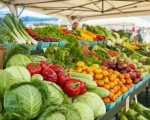The United Nations Food and Agriculture Organization (FAO) has issued an alarming warning regarding the escalating threat posed by the H5N1 bird flu virus. This highly pathogenic strain, originally identified in China in 1996, has now transitioned from poultry to mammals, prompting concerns over food security, economic stability, and potential risks to human health.
A Crisis with Far-Reaching Effects
The FAO’s warning follows extensive outbreaks that have forced mass culls of farmed birds worldwide. Europe lost 47.7 million birds during the 2021-22 epidemic, while the United States culled at least 166 million birds in its latest outbreak. These events have severely disrupted food supply chains, causing noticeable spikes in egg prices and impacting rural jobs, local economies, and consumer costs.
This outbreak is no longer confined to poultry. Cases of H5N1 have been reported in wild and domestic mammals, including zoo animals, pets, and even dairy cattle. FAO Deputy Director-General Godfrey Magwenzi has described the situation as “unprecedented,” highlighting the urgent need for global intervention.
Uncertainty Around Human Risk
While infections in humans remain rare, the European Food Safety Authority (EFSA) and the European Centre for Disease Prevention and Control (ECDC) have identified genetic markers in H5N1 that could enhance its ability to adapt to mammals, including humans. Although there is currently no confirmed evidence of sustained human-to-human transmission, public health officials stress the need for caution.
Scientists warn that the virus’s spread in mammals could provide it with more opportunities to evolve. This would potentially increase its ability to infect humans, underscoring the importance of surveillance and proactive measures.
A Call for Action
FAO officials are urging governments to step up efforts in several key areas, including enhanced surveillance, fortified biosecurity, and more robust outbreak response mechanisms. Beth Bechdol, FAO Deputy Director-General, emphasized the necessity of coordinated global action, stating, “A chain is only as strong as its weakest link.”
Evidence suggests that large-scale poultry farms, where birds are housed in close proximity, create ideal conditions for outbreaks to spread and for the virus to mutate. Experts caution that ineffective biosecurity measures in such environments can accelerate the virus’s proliferation.
What This Means for Public Health and Food Security
The implications of this crisis extend far beyond the farm. Disrupted food systems, economic instability, and the looming threat of a zoonotic (animal-to-human) spillover represent a global call to action. For now, while officials maintain that the risk of widespread infection in humans is low, the situation requires immediate, comprehensive measures to curb further virus spread.
What Can You Do?
Whether you’re a public health official, farmer, or simply someone concerned about food security and health, the time to act is now. Governments, industries, and individuals must unite to build stronger biosecurity, invest in research, and push for coordinated international efforts.
Stay informed and vigilant. A healthier and safer future depends on awareness and action today.








